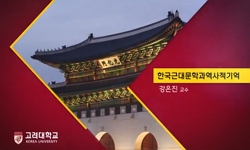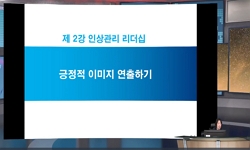16세기 이후의 세계 체제에서 해항도시들은 제국의 식민지 지배를 위한 중추적인 공간이자 식민지 수탈의 공간이었던 동시에, 제국의 지배로부터 독립과 자유를 모색하기 위해 제국의 문화 ...
http://chineseinput.net/에서 pinyin(병음)방식으로 중국어를 변환할 수 있습니다.
변환된 중국어를 복사하여 사용하시면 됩니다.
- 中文 을 입력하시려면 zhongwen을 입력하시고 space를누르시면됩니다.
- 北京 을 입력하시려면 beijing을 입력하시고 space를 누르시면 됩니다.

The Seaport City as a Contact Zone = Considering its Potential through the Lens of 1940s Kobe Literature
한글로보기https://www.riss.kr/link?id=A102165327
- 저자
- 발행기관
- 학술지명
- 권호사항
-
발행연도
2016
-
작성언어
English
-
주제어
해항도시 ; 콘택트 존(Contact Zone) ; 디아스포라 ; 식민주의 ; 문학 ; 2차 세계대전 ; seaport city ; diaspora ; colonialism ; literature ; World War II
-
등재정보
KCI등재
-
자료형태
학술저널
-
수록면
115-147(33쪽)
-
KCI 피인용횟수
0
- 제공처
-
0
상세조회 -
0
다운로드
부가정보
국문 초록 (Abstract)
16세기 이후의 세계 체제에서 해항도시들은 제국의 식민지 지배를 위한 중추적인 공간이자 식민지 수탈의 공간이었던 동시에, 제국의 지배로부터 독립과 자유를 모색하기 위해 제국의 문화 자원을 활용하는 식민지 사람들을 위한 장소이기도 했다. 이러한 대조적인 특성을 바탕으로 해항도시는 바다와 인간 사회, 제국과 식민지, 제국 수도와 해항도시, 도시 공간과 배후지(자연환경을 포함), 제국 시민과 식민지 시민, 부와 가난, 그리고 해항도시 간 등, 차원이 다른 요소 사이의 다원적 접촉과 충돌, 혼용, 조화가 반복되는 콘택트 존으로 기능해왔다. 해항도시의 경험과 기억은 21세기 포스트 국민국가 시대에 공정하고 보다 평화로운 세계(사회)의 건설을 위한 지혜를 내포하고 있다. 본 연구는 1940년대 제2차 세계대전에 즈음한 고베(神戶)를 배경으로 하는 문학작품을 다각적으로 분석하여 콘택트 존으로서 해항도시 고베의 다양한 속성을 밝히고자 한다. 본문에서 중점적으로 다루는 오오카 쇼헤이(大岡昇平)의 소설 산소(酸素)는 공산주의에서 전향하여 해군에 군수 물자를 제공하는 프랑스 회사에 재직하고 있던 일본인 직원을 주인공으로 한다. 작품의 분석을 통해 국민국가 시대에 다국적 도시공간의 비전을 제시할 수 있기를 기대한다.
다국어 초록 (Multilingual Abstract)
In this paper, I will clarify the diverse attributes of the seaport city Kobe 神戸 as a contact zone through a multifaceted introduction of literature texts set in World War II Kobe around the year 1940. In particular, I will elaborate on 大岡昇平Shohei Ooka’s novel Sanso (酸素 “Oxygen”), whose focal character has converted from communism and now is an employee of a French company that provides military supplies to the navy. Through considering these texts, I hope to present a vision of a multi-national urban space in the post-nation-state era.
In the history of the modern world-system of the 16<SUP>th</SUP> century and beyond, seaport cities have often been a pivotal space for colonial domination by imperial powers, and have played the role of depriving their colonies of wealth....
In the history of the modern world-system of the 16<SUP>th</SUP> century and beyond, seaport cities have often been a pivotal space for colonial domination by imperial powers, and have played the role of depriving their colonies of wealth. However, seaport cities have also frequently been a site for colonized peoples to make use of imperial cultural resources to explore independence and freedom from the rule of those very same empires. With these contrasting characteristics, seaports have been a pluralistic contact zone that repeats conflict, intermixing, and harmonization between differing elements in multiple dimensions, such as between the ocean and human society, colonial powers and colonized regions, imperial capitals and seaports, urban spaces and hinterlands (including the natural environment), citizens of colonial powers from urban environments and citizens of colonized regions, affluent and impoverished, and between seaports. Their experiences and memories contain latent wisdom directed toward the construction of a fairer and more peaceful world (society), even in the 21<SUP>st</SUP> century post-nation-state era.
In this paper, I will clarify the diverse attributes of the seaport city Kobe 神戸 as a contact zone through a multifaceted introduction of literature texts set in World War II Kobe around the year 1940. In particular, I will elaborate on 大岡昇平Shohei Ooka’s novel Sanso (酸素 “Oxygen”), whose focal character has converted from communism and now is an employee of a French company that provides military supplies to the navy. Through considering these texts, I hope to present a vision of a multi-national urban space in the post-nation-state era.
목차 (Table of Contents)
- Ⅰ. Introduction
- Ⅱ. Kobe in Modern Literature as a City of Immigrants
- Ⅲ. Modernism and Politics in the 1920s-1940s
- Ⅳ. The Seaport City as a “Port for Refugees”
- Ⅴ. As a Stage for Human Comedy - Shohei Ooka’s Sanso (“Oxygen”)
- Ⅰ. Introduction
- Ⅱ. Kobe in Modern Literature as a City of Immigrants
- Ⅲ. Modernism and Politics in the 1920s-1940s
- Ⅳ. The Seaport City as a “Port for Refugees”
- Ⅴ. As a Stage for Human Comedy - Shohei Ooka’s Sanso (“Oxygen”)
- Ⅵ. Kobe within Asia - Shunshin Chin’s Wartime Novels and the Chinese Diaspora
- Ⅶ. Kobe Within Asia - Okinawa and Korea
- Ⅷ. Conclusion - Reflecting on a History of Welcoming and Expulsion
- Reference
- 국문초록
- Abstract
참고문헌 (Reference)
1 Shinbo Hiroo, "Yokomizo Seishi Jidenteki Zuihitsushu" Kadokawashoten 9-144, 2002
2 Yodogawa, Nagaharu, "Yodogawa Nagaharu Jiden vol.1" Chuokoronsha 13-313, 1988
3 Nishio, Yotaro, "Yi Yonggu Shoden" Ashishobo 220-229, 1977
4 Chen, Shunchen, "Who is Chin Shunchen?" Shueisha 89-94, 2003
5 Shimao Toshio, "Tomei na Toki no Nakade" Ushioshppansha 16-22, 1988
6 "Teikoku Sanso no Ayumi" Daiyamondosha 45-51, 1981
7 Inagaki Taruho, "Taruho Kobe Nendaiki" Daisanbunmeisha 238-267, 1990
8 Haitani, Kenjiro, "Taiyo no Ko" Kadokawashoten 3-430, 1998
9 "Suga Atsuko Zenshu vol.8" Kawaideshoboshinsha 409-612, 2007
10 Chin, Tokujin, "Sonbun to Kobe" Kobesinbun Sogoshuppansenta 295-301, 2002
1 Shinbo Hiroo, "Yokomizo Seishi Jidenteki Zuihitsushu" Kadokawashoten 9-144, 2002
2 Yodogawa, Nagaharu, "Yodogawa Nagaharu Jiden vol.1" Chuokoronsha 13-313, 1988
3 Nishio, Yotaro, "Yi Yonggu Shoden" Ashishobo 220-229, 1977
4 Chen, Shunchen, "Who is Chin Shunchen?" Shueisha 89-94, 2003
5 Shimao Toshio, "Tomei na Toki no Nakade" Ushioshppansha 16-22, 1988
6 "Teikoku Sanso no Ayumi" Daiyamondosha 45-51, 1981
7 Inagaki Taruho, "Taruho Kobe Nendaiki" Daisanbunmeisha 238-267, 1990
8 Haitani, Kenjiro, "Taiyo no Ko" Kadokawashoten 3-430, 1998
9 "Suga Atsuko Zenshu vol.8" Kawaideshoboshinsha 409-612, 2007
10 Chin, Tokujin, "Sonbun to Kobe" Kobesinbun Sogoshuppansenta 295-301, 2002
11 Nagai, Kazu, "Showa ki no Shakai Undo" Yamakawashuppansha 191-258, 1983
12 Kanno, Akimasa, "Shosetsuka Ooka Shohei" Chikumashobo 96-124, 2014
13 Kagawa, Toyohiko, "Shisen wo Koete" PHPkenkyusho 1-463, 2009
14 "Shinshu Kobe Shishi:Rekishihen vol.4" Kobe Shi 848-867, 1994
15 Higuchi, Daisuke, "Senkyuuhyakusanjuunendai to Sesshokukukan" Sobunshashuppan 42-61, 2008
16 Kimura, Toshio, "Sanjo no Kumo" Mizunowashuppan 1-86, 2009
17 Simizu, Hitoshi, "Sakka no Jiden 109 Tamiya Torahiko" Nihontosho Center 88-103, 2000
18 Shinkai Yoshigoro, "Rafukadio Han no Kobe Kuronikuru Ronsetsushu Paretto Bunko Ban" Kobunsha 1-287, 1994
19 Hanazaki Ikuyo, "OokaShohei Kenkyu" Shobunshashuppan 111-136, 2003
20 Ooka, Shohei, "Ooka Shohei Zenshu vol.4" Chikumashobo 3-187, 1995
21 "Ooka Shohei Zenshu vol.23" Chikumashobo 603-760, 2003
22 Oda, Makoto, "Nishinomiya kara Sekai, Nihon wo Miru" Hanashi no Tokushu 11-17, 1993
23 Takahashi, Natsuo, "Nishinadamura no Seishun" Furaisha 99-134, 2006
24 Okamura, Takiko, "Moraesu no Tabi" Sairyusha 1-380, 2000
25 Chin, Shunshin, "MichiNakaba" Shueisha 159-301, 2003
26 Kimura, Toshio, "Mado no Bifu" Mizunowashuppan 183-210, 2010
27 Hayashi, Takashi, "Komatsu Kiyoshi Hyumanisuto no Shozo" Hakuashobo 17-37, 1999
28 Saito, Sanki, "Kobe/Zoku Kobe" Kodansha 7-256, 1975
29 Iseda, Shiro, "Kobe no Shijin Tachi" Henshukobo Noa 223-227, 2002
30 Kato, Masahiro, "Kobe no Hanamachi, Sakariba ko" Shinbun Sogoshuppansenta 5-190, 2009
31 Kaneko, Matin, "Kobe Yudayajin Nanmin" Mizunowashuppan 185-254, 2003
32 Wallerstein, Immanuel, "Kindai Sekai System vol.3" Nagoyadaigakushuppankai 155-230, 2013
33 Oda, Makoto, "Kawa vol.1" Shueisha 9-143, 2008
34 Li, Ang, "Jiden no Shosetsu" Kokushokankokai 41-60, 2004
35 Pratt, Mary Louise, "Imperial Eyes" Routledge 1-257, 1992
36 Nosaka, Akiyuki, "Ichikyuyongo Natsu Kobe" Chuokoronsha 1-352, 1976
37 Adachi, Kenichi, "Hyoden Tkenaka Iku" Rironsha 1-333, 1986
38 Higuchi, Daisuke, "Henbo suru Kiyomori" Yoshikawakobunkan 85-109, 2011
39 "Hanshinkan Modanizumu" Tankosha 157-163, 1997
40 Tamiya, Torahiko, "Furusato Bungakkan Hyogo" Gyosei 57-81, 1994
41 Kato, Muneya, "Endo Shusaku" Keiogijukudaigakushuppankai 29-84, 2006
42 Rakuchi Seikon, "Chuka Kaikan" Kenbunshuppan 95-225, 2000
43 Chin, Shunshin, "Chin Shunshin Chugoku Library vol.9" Shueisha 355-495, 2001
44 Tezuka, Osamu, "Boku no Manga Jinsei" Iwanamishoten 1-223, 1997
45 Juichiya, Gisaburo, "Anomichi Konomichi" Sogensha 485-536, 1929
46 Tezuka, Osamu, "Adorufu ni Tsugu vol.3" Bungeishunju 174-191, 2009
47 Oda, Makoto, "Aboji wo Fumu" Kodansha 9-25, 1998
동일학술지(권/호) 다른 논문
-
- 한국해양대학교 국제해양문제연구소
- 심진호(Shim, Jin-Ho)
- 2016
- KCI등재
-
- 한국해양대학교 국제해양문제연구소
- 안미정(An, Mi-Jeong)
- 2016
- KCI등재
-
해항도시 부산의 해양관광 매력속성과 도시 이미지 및 삶의 질에 관한 연구
- 한국해양대학교 국제해양문제연구소
- 이재형(Lee, Jae-Hyung)
- 2016
- KCI등재
-
- 한국해양대학교 국제해양문제연구소
- 우양호(Woo, Yang-Ho)
- 2016
- KCI등재
분석정보
인용정보 인용지수 설명보기
학술지 이력
| 연월일 | 이력구분 | 이력상세 | 등재구분 |
|---|---|---|---|
| 2023 | 평가예정 | 재인증평가 신청대상 (재인증) | |
| 2020-01-01 | 평가 | 등재학술지 선정 (재인증) |  |
| 2019-12-01 | 평가 | 등재후보로 하락 (계속평가) |  |
| 2016-01-01 | 평가 | 등재학술지 선정 (계속평가) |  |
| 2014-01-01 | 평가 | 등재후보학술지 선정 (신규평가) |  |
학술지 인용정보
| 기준연도 | WOS-KCI 통합IF(2년) | KCIF(2년) | KCIF(3년) |
|---|---|---|---|
| 2016 | 0.5 | 0.5 | 0.41 |
| KCIF(4년) | KCIF(5년) | 중심성지수(3년) | 즉시성지수 |
| 0.38 | 0.35 | 0.629 | 0 |




 DBpia
DBpia






